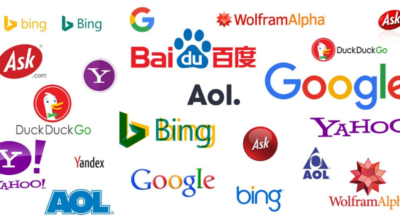Social media API integration is a powerful tool for marketers and business owners. It allows you to access data from multiple platforms and provides robust analytics tools for more informed decision-making.
But how does it work? And what are the benefits of using it? In this article, we will delve into these inquiries and additional ones.
What is an API?
An API is an application programming interface. It’s the software intermediary that allows different applications to communicate with one another and exchange data between them. APIs are all around us: when you use a rideshare app, make a mobile payment, or even remotely change your thermostat temperature, you’re using an API.
Large technology companies often make their APIs publicly available to third-party developers, allowing other social media managers to leverage those services in their platforms. It is known as an open API. In addition, many companies offer their private APIs to selected business partners to provide exclusive access to their products and services. It is known as a partner API.
These APIs enable different software applications to interact automatically. That is why they are so valuable in social media: with them, it is possible to integrate the social media tools and widgets currently used in digital marketing campaigns.
APIs can be combined to create programs with unique functions and behaviors. They’re like Legos for programmers: you can add as little or as much of them to your code as you want, and they will still work together to produce a functional program.
What are the benefits of API integration?
Social media APIs offer many benefits for businesses and marketers. With these tools, you can develop apps and plugins that interact with the platforms’ tools and services to provide users with a more personalized and efficient experience. Additionally, these applications can automate tasks and provide analytics to help you better understand your social media performance.
Another benefit of API integration is that it allows you to collect more data than you could get from other methods, such as web scraping. This is because each platform offers a unique data set through its API.
A final benefit of using API integration is that it can save you time and effort by enabling you to automate some of your data collection and analysis tasks. It can also reduce the number of errors during the process.
If you’re looking for a tool that can enable you to use social media APIs to collect and analyze data.
How do APIs work?
APIs allow two applications to communicate by sharing data and resources. It is done through a request and response cycle. For example, imagine that you want to show weather forecasts on your website or app. You could manually enter the forecasts into your system as each user requests them, but this would be time-consuming and prone to errors. Instead, you could use an API to retrieve this information from a central meteorological source and deliver it to your customers in seconds.
An API makes it easy for developers to build upon existing software and systems. It allows them to create apps faster and more efficiently while minimizing the code they need to write. Additionally, APIs can help reduce costs by eliminating the need to build and maintain a proprietary infrastructure.
There are two main types of APIs: open and closed. Open APIs are designed to be accessible to a wide range of developers. In contrast, closed APIs are restricted to a specific group of developers with a business relationship with the company that created the API.
Another type of API is a composite API, which combines multiple underlying APIs into a single interface. It helps to simplify the process of integrating multiple applications and provides a more streamlined experience for developers. For example, if you need to integrate Twitter, Instagram, and Facebook into your website, you can use an API that combines these three platforms into a single interface.
What are composite APIs?
A composite API is an API that bundles several different API calls into one. It is often done to reduce data usage, as fewer API calls are needed to access the same amount of information.
It is also helpful for applications that require many different actions to be completed. For example, a shopping cart may need to create an order, add an item, and change the order status. If this is done with a single API call, then it can save round-trip time and make the process more efficient.
Composite APIs can be implemented using various technologies, including REST, SOAP, and JSON-RPC. However, REST and SOAP are the most common. REST is a more straightforward and flexible protocol, while SOAP offers more functionality and stricter security.
Using a composite API is a great way to collect data from social media platforms. It can retrieve customer reviews, analyze trends, and monitor competitors. This data type can help businesses improve their products and services by identifying customers’ needs. It can also be used to target advertising campaigns more effectively. A composite API can be a valuable tool for any business, regardless of industry. It can save time, money, and resources by reducing the data required to be collected.









